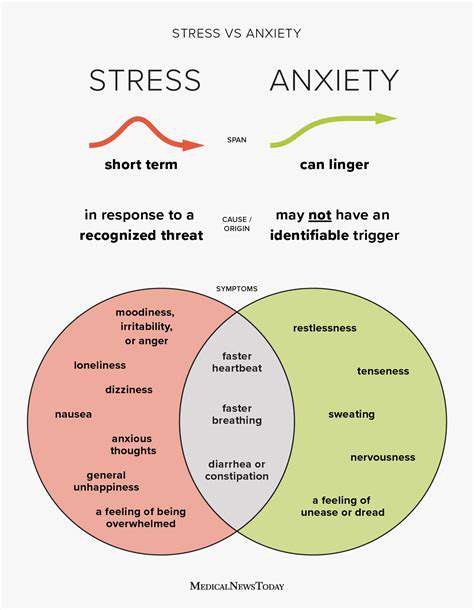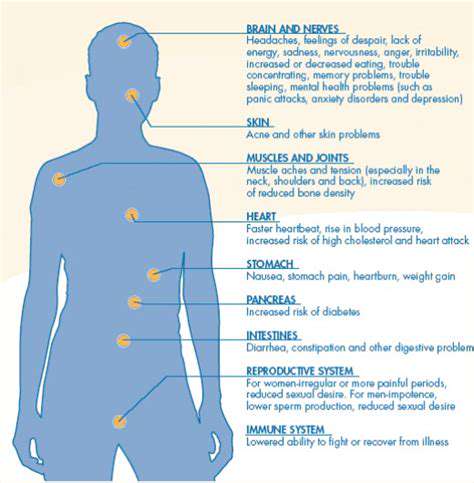Exploring the Physiological Symptoms of Anxiety

Physical Responses to Stress: The Initial Reaction
Our bodies function as remarkably intricate and adaptive systems, perpetually fine-tuning themselves to meet environmental demands. When faced with stressful circumstances, one of the primary physiological reactions involves the sympathetic nervous system springing into action. This sequence of bodily changes, commonly known as the fight-or-flight mechanism, represents an evolutionary adaptation critical for human survival. During this phase, the body undergoes dramatic transformations - blood circulation shifts toward major muscle groups while the heart begins pounding more vigorously. Biological processes temporarily deprioritize non-essential functions to concentrate resources on immediate survival needs.
This biochemical cascade features a dramatic upsurge in adrenaline and noradrenaline secretion. These stress hormones induce measurable cardiovascular changes including elevated blood pressure and accelerated pulse, while simultaneously sharpening mental focus and environmental awareness. Such physiological adaptations prove indispensable when confronting perceived dangers, regardless of whether these threats manifest in physical reality or psychological perception.
The Chronic Stress Response: A Long-Term Impact
While the acute stress response serves vital protective functions, its persistent activation creates detrimental health consequences. When the body's alarm systems remain continuously engaged, they inflict cumulative damage across multiple physiological systems. This unrelenting state of emergency preparedness gradually erodes the body's natural equilibrium and functional capacity.
Sustained stress exposure correlates strongly with numerous medical conditions spanning cardiovascular deterioration, compromised immunological defenses, and persistent gastrointestinal dysfunction. The endocrine system becomes dysregulated through constant cortisol secretion, while cellular repair mechanisms grow progressively impaired.
Muscle Tension and Physical Pain
Physical manifestations of stress frequently appear as unrelenting muscular contraction, particularly affecting postural muscle groups in the cervical, trapezius, and lumbar regions. This perpetual tension frequently evolves into chronic myofascial pain syndromes that substantially diminish quality of life. The body's defensive bracing mechanism, originally designed for short-term protective contraction, becomes pathologically persistent.
Sleep Disturbances and their Impact on Well-being
Stress physiology wreaks particular havoc on sleep architecture, commonly producing insomnia symptoms or fragmented sleep patterns. This sleep deprivation then amplifies stress vulnerability, establishing a self-perpetuating cycle of dysfunction. Inadequate sleep quantity and quality demonstrably impair immunological competence and significantly degrade higher cognitive performance. The compounding consequences of chronic sleep disruption represent a major determinant of overall physiological resilience.
Gastrointestinal Issues and Stress
The bidirectional communication network between the enteric nervous system and central nervous system has emerged as a crucial focus of contemporary medical research. Chronic stress disrupts the delicate ecological balance of intestinal microbiota, frequently precipitating functional digestive disorders like irritable bowel syndrome and chronic dyspepsia. The digestive tract demonstrates particular sensitivity to stress neurochemistry, with measurable impacts on enzymatic secretion, intestinal motility, and nutrient assimilation. Stress-induced neuroinflammatory pathways can trigger mucosal barrier dysfunction, creating systemic metabolic consequences.

